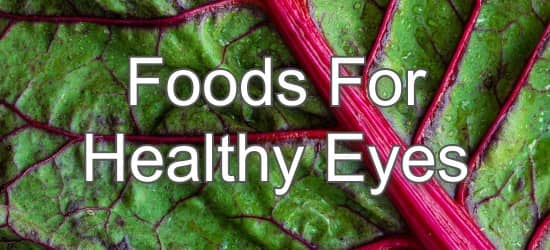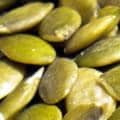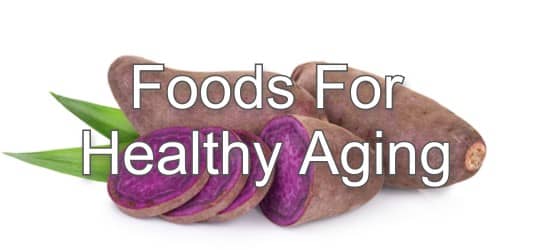The Best Natural Foods For Healthy Eyes

Keeping our eyes healthy is important, especially as we get older. Globally, around 250 million people suffer from varying degrees of vision loss (1). Although not every case of vision loss is preventable, there are actions that a person can take to reduce their risk of losing their sight.
The leading causes for loss of vision include: cataracts, age-related macular degeneration (AMD), glaucoma, and diabetic retinopathy (a complication of diabetes). (1) All of these are much more likely to affect people as they age. As well as having regular eye tests, there are various diet and lifestyle measures we can all take to protect the health of our eyes and our vision. (1)
The eye is especially sensitive to damage from oxidative stress, which increases the risk of poor eye health. Oxidative stress is a type of damage that occurs inside of a cell, due to certain unstable compounds that are formed when oxygen is used by the cell to make energy. These compounds are known as free radicals.
Eyes have an especially high rate of oxygen consumption, along with a high concentration of delicate polyunsaturated fatty acids, which are especially prone to damage by free radicals. (1) Furthermore, the eyes are constantly exposed to high-energy visible light. This combination of factors creates high levels of the compounds that can trigger oxidative damage to the eyes.
It, therefore, makes sense to eat a diet rich in antioxidants as a starting point. This means a diet high in plants; lots of different and colorful fruits and vegetables, plus whole grains, pulses, nuts, and seeds.
Foods for Eye Health
-
 1. Fatty Fish + Add
Omega-3 fats are beneficial for eyes and vision, especially those from oily fish. In fact, people who eat fish more than once a week have half the risk of developing AMD (the leading cause of sight loss) compared with those who eat it less than once a month (2). In one study, taking fish oil supplements (blended with coenzyme Q10 and acetyl-L-carnitine) for 12 months resulted in improvements in several measures of visual function in people with early-stage AMD (3).
1. Fatty Fish + Add
Omega-3 fats are beneficial for eyes and vision, especially those from oily fish. In fact, people who eat fish more than once a week have half the risk of developing AMD (the leading cause of sight loss) compared with those who eat it less than once a month (2). In one study, taking fish oil supplements (blended with coenzyme Q10 and acetyl-L-carnitine) for 12 months resulted in improvements in several measures of visual function in people with early-stage AMD (3).
Nutrition Facts for Cooked Atlantic Salmon (Farmed). -
2. Salad + Add
Research shows that eating plenty of leafy greens such as lettuce, arugula (rocket), and watercress is associated with a 30% lower risk of glaucoma, a condition where pressure builds up in the eye, causing damage to the optic nerve and retina (4). This may be due to their high content of nitrates, which are compounds that improve blood circulation to many tissues, including the eyes. Adding carrots, parsley, beetroot, celery, radishes and green beans to your salads will add even more nitrates.
Nutrition Facts for Romaine Lettuce. -
 3. Corn (Maize) + Add
Corn has the highest lutein content of all vegetables and is also a great source of zeaxanthin (5). These two compounds are known as carotenoids. They absorb high-energy light waves that can damage the eye, and also help to neutralize free radicals. Their levels naturally decrease with age, so consuming them through the diet is beneficial for keeping the levels topped up and keeping eyes healthy. Lutein and zeaxanthin have been shown in studies to benefit people with healthy eyes, protecting against eye fatigue and the effects of long-term computer use (6,7) as well as reducing the risk of AMD (8,9,10,11).
3. Corn (Maize) + Add
Corn has the highest lutein content of all vegetables and is also a great source of zeaxanthin (5). These two compounds are known as carotenoids. They absorb high-energy light waves that can damage the eye, and also help to neutralize free radicals. Their levels naturally decrease with age, so consuming them through the diet is beneficial for keeping the levels topped up and keeping eyes healthy. Lutein and zeaxanthin have been shown in studies to benefit people with healthy eyes, protecting against eye fatigue and the effects of long-term computer use (6,7) as well as reducing the risk of AMD (8,9,10,11).
Nutrition Facts for Raw Yellow Sweet Corn. -
 4. Kale + Add
This super healthy vegetable is a great all-rounder for eyes, being a source of nitrates, beta-carotene, lutein, zeaxanthin and vitamins C and E. Research has linked a higher intake of these nutrients with a 43% lower risk of developing AMD (12). A high intake of dark green leafy vegetables leads to protective eye-health effects (12). Spinach and other greens such as collards contain similar nutrients as kale and should also be included in a healthy diet.
4. Kale + Add
This super healthy vegetable is a great all-rounder for eyes, being a source of nitrates, beta-carotene, lutein, zeaxanthin and vitamins C and E. Research has linked a higher intake of these nutrients with a 43% lower risk of developing AMD (12). A high intake of dark green leafy vegetables leads to protective eye-health effects (12). Spinach and other greens such as collards contain similar nutrients as kale and should also be included in a healthy diet.
Nutrition Facts for Cooked Kale (Boiled, Drained). -
5. Blueberries + Add
Blueberries are high in protective antioxidants, including vitamin C, anthocyanins, and other flavonoids. These compounds help to protect the eyes from environmental damage and oxidative stress (13,14,15,16). Flavonoids also help to keep the blood vessels supplying the eyes healthy. Including a handful of blueberries every day as a snack or breakfast topping will give you a good dose of protective antioxidants.
Nutrition Facts for Blueberries. -
 6. Eggs + Add
Eggs provide a highly bioavailable source of lutein, a carotenoid with protective effects for eye health. Evidence suggests that moderate egg consumption of 2-4 eggs per week is associated with a 62% reduced risk of developing AMD (17). Furthermore, a meta-analysis of five clinical trials found that daily egg consumption increases macular pigment optical density (MPOD), which is a measure of good eye health and a reduced risk factor for AMD (18).
6. Eggs + Add
Eggs provide a highly bioavailable source of lutein, a carotenoid with protective effects for eye health. Evidence suggests that moderate egg consumption of 2-4 eggs per week is associated with a 62% reduced risk of developing AMD (17). Furthermore, a meta-analysis of five clinical trials found that daily egg consumption increases macular pigment optical density (MPOD), which is a measure of good eye health and a reduced risk factor for AMD (18).
Nutrition Facts for Hard Boiled Eggs. -
 7. Whole Grains + Add
Whole grains such as oats, brown rice, wholewheat and rye help keep blood sugar levels balanced and this may have benefits for eye health. In one study, a high glycemic diet (containing refined carbohydrates and sugary foods), led to a higher risk of macular degeneration compared with a low glycemic diet. Swapping refined grains such as white bread and white rice for wholegrain versions is therefore a good idea for eye health as well as general health (19).
7. Whole Grains + Add
Whole grains such as oats, brown rice, wholewheat and rye help keep blood sugar levels balanced and this may have benefits for eye health. In one study, a high glycemic diet (containing refined carbohydrates and sugary foods), led to a higher risk of macular degeneration compared with a low glycemic diet. Swapping refined grains such as white bread and white rice for wholegrain versions is therefore a good idea for eye health as well as general health (19).
Nutrition Facts for Cooked Oatmeal. -
 8. Squash & Pumpkin Seeds + Add
Pumpkin and squash seeds are a top source of zinc, an essential mineral needed for the functioning of several enzymes in the retina of the eye. It also helps vitamin A to create a pigment called melanin, which protects the eye from damage by light. Zinc helps alleviate night-blindness in people who are zinc deficient and may have some benefits for people suffering from macular degeneration (20). Therefore, it is prudent to ensure you get enough zinc from healthy foods such as nuts, seeds, seafood, beans, wheat germ, and mushrooms.
8. Squash & Pumpkin Seeds + Add
Pumpkin and squash seeds are a top source of zinc, an essential mineral needed for the functioning of several enzymes in the retina of the eye. It also helps vitamin A to create a pigment called melanin, which protects the eye from damage by light. Zinc helps alleviate night-blindness in people who are zinc deficient and may have some benefits for people suffering from macular degeneration (20). Therefore, it is prudent to ensure you get enough zinc from healthy foods such as nuts, seeds, seafood, beans, wheat germ, and mushrooms.
Nutrition Facts for Roasted Squash And Pumpkin Seeds (Pepitas) (Unsalted). -
 9. Seafood + Add
Seafood containing red pigments such as shrimp (prawns), crab, lobster, and pink-colored fish such as salmon and trout contain a substance called astaxanthin, shown to have various health benefits including benefits for eye health (21,2,23). Astaxanthin has potent antioxidant effects, even stronger than other carotenoids (22). Astaxanthin benefits people suffering with glaucoma and cataracts (22) and may also help to reduce symptoms like eye fatigue (23).
9. Seafood + Add
Seafood containing red pigments such as shrimp (prawns), crab, lobster, and pink-colored fish such as salmon and trout contain a substance called astaxanthin, shown to have various health benefits including benefits for eye health (21,2,23). Astaxanthin has potent antioxidant effects, even stronger than other carotenoids (22). Astaxanthin benefits people suffering with glaucoma and cataracts (22) and may also help to reduce symptoms like eye fatigue (23).
Nutrition Facts for Cooked Clams. -
 10. Carrots + Add
The old saying about eating carrots helping you to see in the dark actually carries some truth. Carrots are a top source of beta-carotene, which is converted in the body into Vitamin A, an essential vitamin for healthy eyes and vision. In particular, beta-carotene and vitamin A help protect night vision and prevent night blindness. Beta-carotene may also provide some protection against eye conditions such as AMD (25). Other top sources of beta-carotene are sweet potatoes, squash, cantaloupe, red peppers, dried apricots, and dark green vegetables.
10. Carrots + Add
The old saying about eating carrots helping you to see in the dark actually carries some truth. Carrots are a top source of beta-carotene, which is converted in the body into Vitamin A, an essential vitamin for healthy eyes and vision. In particular, beta-carotene and vitamin A help protect night vision and prevent night blindness. Beta-carotene may also provide some protection against eye conditions such as AMD (25). Other top sources of beta-carotene are sweet potatoes, squash, cantaloupe, red peppers, dried apricots, and dark green vegetables.
Nutrition Facts for Cooked Carrots (Boiled, Drained).
More Tips for Better Eye Health
- Always wear sunglasses in the sun, and make sure they have 100% UV protection to filter out both UVA and UVB rays.
- Avoid smoke from cigarette smoking, being around secondhand smoke, and other pollution such as traffic fumes.
- Take regular screen breaks to prevent eyestrain - look away from your computer and towards something more distant at least once every 10 minutes and have a 5-10 minute break away from the screen every hour if possible.
- Eating a diet high in unhealthy fats is associated with an increased risk of AMD (2), so limit food sources of these, such as processed foods, fried foods, and fatty meat.
- Limit or avoid added sugar, sugary drinks, and refined carbohydrates (white bread, pastry, white rice, white pasta etc.) as these produce blood sugar imbalances, which may be damaging to eye health long-term (19).
- Maintaining a healthy weight reduces the risk of developing eye problems (25).
Related
Data Sources and References
- Haddad HM. Nutrition and Eye Health Metab Pediatr Syst Ophthalmol (1985). 1994;17(1-4):41-4. 8719285
- Chua B, Flood V, Rochtchina E, Wang JJ, Smith W, Mitchell P. Dietary fat and fish intake and age-related maculopathy Arch Ophthalmol. 2006 Jul;124(7):981-6. doi: 10.1001/archopht.124.7.981. 16832021
- Fehér J, Kovács B, Kovács I, Schvöller M, Corrado Balacco G. Improvement of visual functions and fundus alterations in early age-related macular degeneration treated with a combination of acetyl-L-carnitine, n-3 fatty acids, and coenzyme Q10 Orv Hetil. 2007 Dec 2;148(48):2259-68. doi: 10.1556/OH.2007.28250. 18039616
- Pasquale LR, Hyman L, Wiggs JL, Rosner BA, Joshipura K, McEvoy M, McPherson ZE, Danias J, Kang JH. Association of Dietary Nitrate Intake With Primary Open-Angle Glaucoma: A Prospective Analysis From the Nurses' Health Study and Health Professionals Follow-up Study Ophthalmology. 2016 Nov;123(11):2318-2327. doi: 10.1016/j.ophtha.2016.07.014. Epub 2016 Aug 20. 27554035
- Humphries JM, Khachik F. Fruits and vegetables that are sources for lutein and zeaxanthin: the macular pigment in human eyes J Agric Food Chem. 2003 Feb 26;51(5):1322-7. doi: 10.1021/jf026073e. 12590476
- Sekikawa T, Kizawa Y, Li Y, Miura N. Effects of anthocyanin, astaxanthin, and lutein on eye functions: a randomized, double-blind, placebo-controlled study J Clin Biochem Nutr. 2023 Jan;72(1):74-81. doi: 10.3164/jcbn.22-65. Epub 2022 Oct 18. 36777084
- Bartlett HE, Eperjesi F. A 12-week lutein supplementation improves visual function in Chinese people with long-term computer display light exposure Clin Nutr. 2008 Apr;27(2):218-27. doi: 10.1016/j.clnu.2008.01.003. Epub 2008 Mar 4. 18294739
- Musch DC. Secondary analyses of the effects of lutein/zeaxanthin on age-related macular degeneration progression: AREDS2 report No. 3 JAMA Ophthalmol. 2014 Feb;132(2):139-41. doi: 10.1001/jamaophthalmol.2013.7443. 24309835
- Abdel-Aal el-SM, Akhtar H, Zaheer K, Ali R. The Effect of Lutein on Eye and Extra-Eye Health Nutrients. 2013 Apr 9;5(4):1169-85. doi: 10.3390/nu5041169. 23571649
- Moeller SM, Jacques PF, Blumberg JB. Dietary sources of lutein and zeaxanthin carotenoids and their role in eye health J Am Coll Nutr. 2000 Oct;19(5 Suppl):522S-527S. doi: 10.1080/07315724.2000.10718975. 11023002
- Ma L, Liu R, Du JH, Liu T, Wu SS, Liu XH. What do we know about the macular pigment in AMD: the past, the present, and the future Nutrients. 2016 Jul 12;8(7):426. doi: 10.3390/nu8070426. 27420092
- Hankinson S, Stampfer MJ. Dietary carotenoids, vitamins A, C, and E, and advanced age-related macular degeneration. Eye Disease Case-Control Study Group JAMA. 1994 Nov 9;272(18):1455-6. doi: 10.1001/jama.1994.03520180079040. 7933430
- Huang W, Yan Z, Li D, Ma Y, Zhou J, Sui Z. Protective Effects of Blueberry Anthocyanins against H2O2-Induced Oxidative Injuries in Human Retinal Pigment Epithelial Cells Oxid Med Cell Longev. 2018 Feb 22;2018:1862462. doi: 10.1155/2018/1862462. eCollection 2018. 29682153
- Wang Y, Zhao L, Wang D, Huo Y, Ji B. The protective effects of berry-derived anthocyanins against visible light-induced damage in human retinal pigment epithelial cells J Sci Food Agric. 2016 May;96(7):2494-503. doi: 10.1002/jsfa.7370. Epub 2015 Sep 8. 26250597
- Wang Y, Zhang D, Liu Y, Wang D, Liu J, Ji B. Blueberry anthocyanins: protection against ageing and light-induced damage in retinal pigment epithelial cells J Sci Food Agric. 2015 Mar 30;95(5):936-44. doi: 10.1002/jsfa.6765. Epub 2014 Jul 15. 24909670
- Liu Y, Liu M, Chen Q, Liu GM, Cao MJ, Sun L, Lu Z, Guo C. Visible Light-Induced Lipid Peroxidation of Unsaturated Fatty Acids in the Retina and the Inhibitory Effects of Blueberry Polyphenols J Agric Food Chem. 2018 Dec 5;66(48):12730-12740. doi: 10.1021/acs.jafc.8b05272. Epub 2018 Nov 21. 30411897
- Gopinath B, Liew G, Kifley A, Lewis JR, Bondonno C, Joachim N, Hodgson JM, Mitchell P. Consumption of eggs and the 15-year incidence of age-related macular degeneration J Acad Nutr Diet. 2018 Dec;118(12):2311-2314. doi: 10.1016/j.jand.2018.07.012. Epub 2018 Oct 17. 30342988
- Ma L, Liu R, Du JH, Liu T, Wu SS, Liu XH. A positive effect of egg consumption on macular pigment and healthy vision: a systematic review and meta-analysis of clinical trials Nutrients. 2016 Jul 12;8(7):426. doi: 10.3390/nu8070426. 27420092
- Chiu CJ, Milton RC, Klein R, Gensler G, Taylor A. Association between dietary glycemic index and age-related macular degeneration in nondiabetic participants in the Age-Related Eye Disease Study Am J Clin Nutr. 2007 Oct;86(4):1210-8. doi: 10.1093/ajcn/86.4.1210. 17921404
- Trempe CL. Oral zinc in macular degeneration Arch Ophthalmol. 1992 Nov;110(11):1517. doi: 10.1001/archopht.1992.01080230015002. 1444901
- Kishimoto Y, Yoshida H, Kondo K. Clinical Applications of Astaxanthin in the Treatment of Ocular Diseases: Emerging Insights Mar Drugs. 2016 Feb 5;14(2):35. doi: 10.3390/md14020035. 26861359
- Davinelli S, Nielsen ME, Scapagnini G. "Therapeutic uses of natural astaxanthin: An evidence-based review focused on human clinical trials" Nutrients. 2018 Apr 22;10(4):522. doi: 10.3390/nu10040522. 29690549
- Sekikawa T, Kizawa Y, Li Y, Miura N. Effects of anthocyanin, astaxanthin, and lutein on eye functions: a randomized, double-blind, placebo-controlled study J Clin Biochem Nutr. 2023 Jan;72(1):74-81. doi: 10.3164/jcbn.22-65. Epub 2022 Oct 18. 36777084
- Jampol LM. A randomized, placebo-controlled, clinical trial of high-dose supplementation with vitamins C and E, beta carotene, and zinc for age-related macular degeneration and vision loss: AREDS report no. 8 Arch Ophthalmol. 2001 Oct;119(10):1533-4. doi: 10.1001/archopht.119.10.1533. 11594957
- Man RE, Sabanayagam C, Chiang PP, Li LJ, Noonan JE, Wang JJ, Wong TY, Cheung GC, Tan GS, Lamoureux EL. Obesity and risk of age-related eye diseases: a systematic review of prospective population-based studies JAMA Ophthalmol. 2016 Mar;134(3):251-7. doi: 10.1001/jamaophthalmol.2015.5103. 26720805
Simplify Nutrition Tracking with MyFoodData!
Speedy Tools and Detailed Data FREEEasily analyze your meals to find the best foods for your goals.
✅ Use our recipe nutrition calculator and nutrition comparison tool.
✅ Access expert nutrition data tools and in-depth articles.
✅ Log foods and organize your recipes with a free account.


 Next ➞
Next ➞
